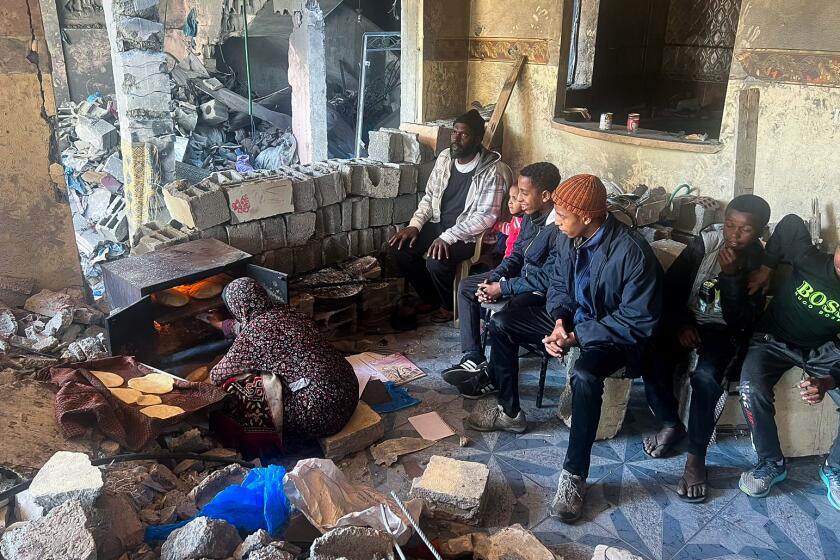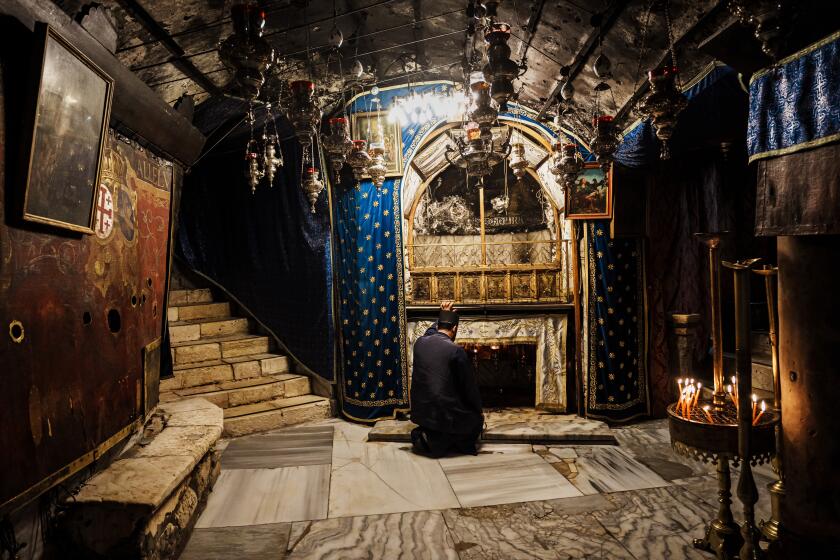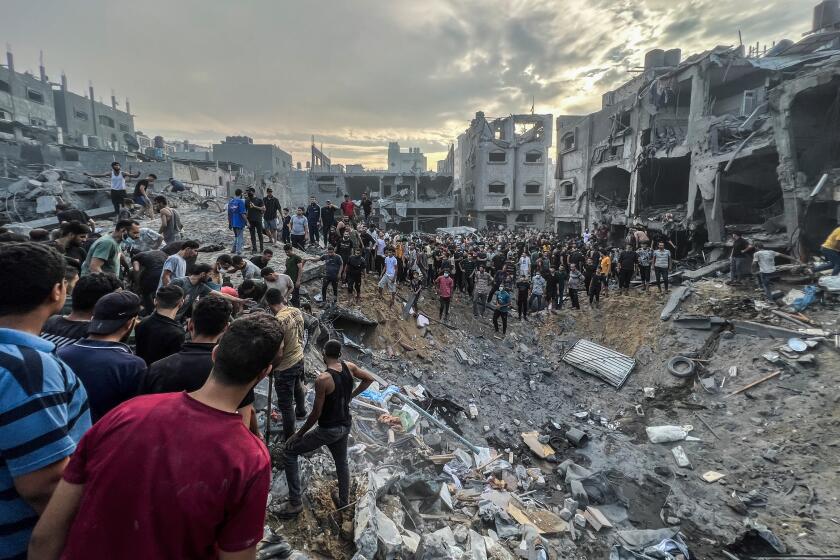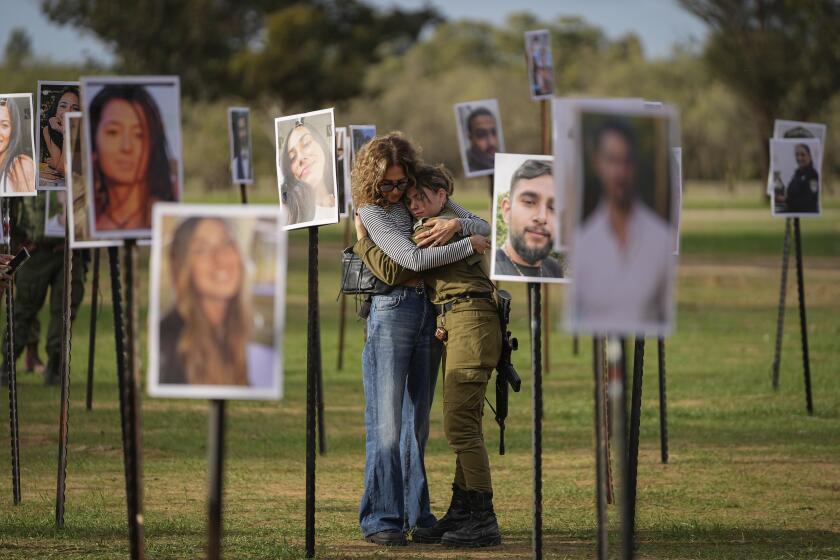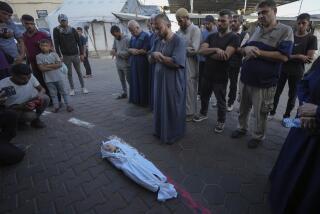Israel’s military campaign in Gaza seen as among deadliest in recent history, experts say
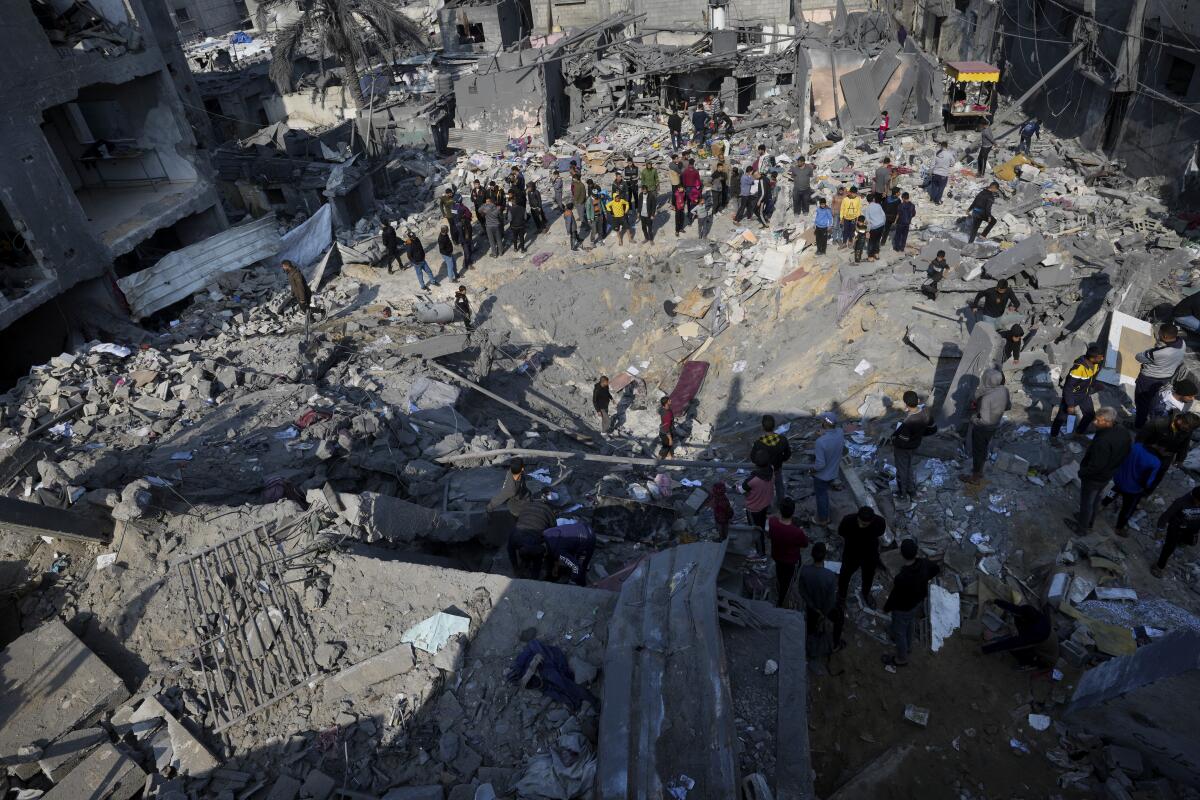
JERUSALEM — The Israeli military campaign in Gaza, experts say, now sits among the deadliest and most destructive in recent history.
In just over two months, the offensive has wreaked more destruction than the razing of Syria’s Aleppo between 2012 and 2016, Ukraine’s Mariupol or, proportionally, the Allied bombing of Germany in World War II. It has killed more civilians than the U.S.-led coalition did in its three-year campaign against the Islamic State group.
The Israeli military has said little about what kinds of bombs and artillery it is using in Gaza. But from blast fragments found on-site and analyses of strike footage, experts are confident that the vast majority of bombs dropped on the besieged enclave are U.S.-made. They say the weapons include 2,000-pound “bunker-busters” that have killed hundreds in densely populated areas.
With the Palestinian death toll in Gaza surpassing 20,000, the international community is calling for a cease-fire. Israel vows to press ahead, saying it wants to destroy Hamas’ military capabilities following the militant group’s Oct. 7 cross-border rampage that triggered the war, in which it killed 1,200 people and took 240 others hostage.
The Biden administration has quietly continued to supply arms to Israel. This month, however, President Biden publicly acknowledged that Israel was losing international legitimacy for what he called its “indiscriminate bombing.”
Here’s a look at what is known so far about Israel’s war on Gaza.
Detailing the destruction
Israel’s military has destroyed more than two-thirds of all structures in northern Gaza and a quarter of buildings in the southern area of Khan Yunis, according to an analysis of Copernicus Sentinel-1 satellite data by Corey Scher of the CUNY Graduate Center and Jamon Van Den Hoek of Oregon State University, experts in mapping damage during wartime.
The percentage of damaged buildings in the Khan Yunis area nearly doubled in just the first two weeks of the Israeli military’s broadening its attacks into south Gaza, they said.
‘I just don’t know where we’ll go.’ It’s a question Palestinians ask over and over in Gaza as Israel ramps up bombardment after Hamas truce collapsed.
That includes tens of thousands of homes as well as schools, hospitals, mosques and stores. U.N. monitors have said that about 70% of school buildings across Gaza have been damaged. At least 56 damaged schools served as shelters for displaced civilians. Israeli strikes damaged 110 mosques and three churches, the monitors said.
Israel holds Hamas responsible for civilian deaths by embedding militants in civilian infrastructure. Those sites also shelter multitudes of Palestinians who have fled under Israeli evacuation orders.
“Gaza is now a different color from space. It’s a different texture,” said Scher, who has worked with Van Den Hoek to map destruction across several war zones, from Aleppo to Mariupol.
For a Thai farmworker taken hostage by Hamas militants Oct. 7, memories of Israel and Gaza are of love, grief and heartbreak for those she left behind.
Historical comparisons
By some measures, destruction in Gaza has outpaced Allied bombings of Germany during World War II.
Between 1942 and 1945, the allies attacked 51 major German cities and towns, destroying about 40% to 50% of their urban areas, said Robert Pape, a U.S. military historian. Pape said this amounted to 10% of buildings across Germany, compared with more than 33% across Gaza, a densely populated territory of just 140 square miles.
“Gaza is one of the most intense civilian punishment campaigns in history,” said Pape. “It now sits comfortably in the top quartile of the most devastating bombing campaigns ever.”
The U.S.-led coalition’s 2017 assault to expel the Islamic State group from the Iraqi city of Mosul was considered one of the most intense attacks on a city in generations. That nine-month battle killed around 10,000 civilians, a third of them from coalition bombardment, according to an Associated Press investigation at the time.
During the 2014-17 campaign to defeat Islamic State in Iraq, the coalition carried out nearly 15,000 strikes across the country, according to Airwars, a London-based independent group that tracks recent conflicts. By comparison, the Israeli military said last week it has conducted 22,000 strikes in Gaza.
In Bethlehem, the West Bank town revered as Jesus’ birthplace, Christmas is all but canceled, in solidarity with Palestinians’ suffering in Gaza.
What types of bombs does Israel use?
The Israeli military has not specified what it is using. It says every strike is cleared by legal advisors to make sure it complies with international law.
“We choose the right munition for each target — so it doesn’t cause unnecessary damage,” said the army’s chief spokesman, Rear Adm. Daniel Hagari.
Weapons experts have been able to draw conclusions by analyzing blast fragments found on-site, satellite images and videos circulated on social media. They say the findings offer only a peek into the full scope of the air war.
So far, fragments of American-made Joint Direct Attack Munitions (JDAM) bombs and smaller diameter bombs have been found in Gaza, according to Brian Castner, a weapons investigator with Amnesty International.
The JDAM bombs include precision-guided 1,000- and 2,000-pound “bunker-busters.”
“It turns earth to liquid,” said Marc Garlasco, a former Pentagon defense official and a war crimes investigator for the U.N. “It pancakes entire buildings.”
He said the explosion of a 2,000-pound bomb in the open means “instant death” for anyone within about 100 feet. Lethal fragmentation can extend for up to 1,200 feet.
In an Oct. 31 strike on the urban refugee camp of Jabaliya, experts say a 2,000-pound bomb killed more than 100 civilians.
Airstrikes flatten blocks of Gaza refugee camp, bringing rage, grief and a perilous new phase of war
Israel’s military says it killed a Hamas commander in devastating strikes in Jabaliya refugee camp in Gaza. Hospital chief describes ‘waterfall of casualties.’
Experts have also identified fragments of SPICE (Smart, Precise Impact, Cost-Effective) 2,000-pound bombs, which are fitted with a GPS guidance system to make targeting more precise. Castner said the bombs are produced by the Israeli defense giant Rafael, but a recent State Department release first obtained by the New York Times showed some of the technology had been produced in the United States.
The Israeli military is also dropping unguided “dumb” bombs. Several experts pointed to two photos posted to social media by the Israeli air force at the start of the war showing fighter jets stocked with unguided bombs.
Israel’s stated goals
Israel says it has two goals: destroy Hamas and rescue the 129 hostages still held by militants.
Eleven weeks into the war, Israel says it has destroyed many Hamas sites and hundreds of tunnel shafts and has killed 7,000 Hamas fighters out of an estimated 30,000 to 40,000. The claims could not be independently verified. Israeli leaders say intense military pressure is the only way to free more hostages.
As the Palestinian militant group Hamas frees more hostages amid a temporary truce with Israel, a harrowing glimpse of captivity in war-torn Gaza emerges.
But some families of hostages worry that the bombing endangers their loved ones. Hostages released during a weeklong cease-fire last month recounted that their captors moved them from place to place to avoid Israeli bombardment. Hamas has claimed that several hostages died from Israeli bombs, though the claims could not be verified.
The Palestinian death toll and destruction, as well as the humanitarian crisis in the territory, have also increased international calls for a cease-fire.
“Nowhere in Gaza is safe,” United Nations Secretary-General António Guterres said this month.
More to Read
Sign up for Essential California
The most important California stories and recommendations in your inbox every morning.
You may occasionally receive promotional content from the Los Angeles Times.
